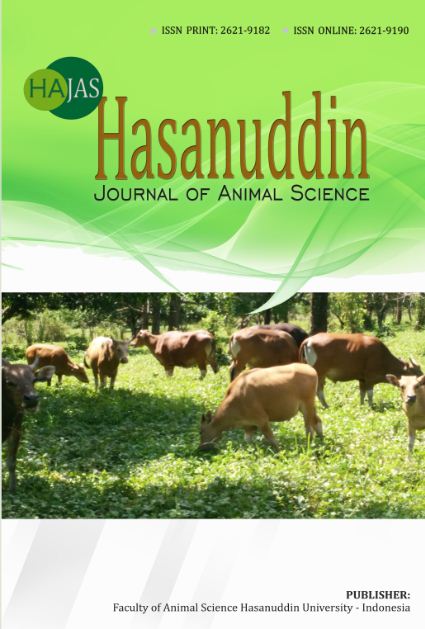Effect of Natural Adhesive Tapioca Meal on the Quality of Urea Molasses Multinutrient Block
DOI:
https://doi.org/10.20956/hajas.v5i2.30984Abstract
To ensure safe consumption and substitution in the production of urea multi-nutrient molasses block (UMMB), adhesives must be used to bond the raw materials. While cement is one of the primary adhesive materials used, its inorganic material means that its use in feed should be restricted. To address this issue, a study was conducted to evaluate the quality and shelf life of UMMB with tapioca meal as an adhesive substitute for cement. The study used a completely randomized design (CRD) with two factors. The first factor, A, involved substituting cement with tapioca meal., i.e., cement 100% (T0); cement 75% and tapioca meal 25% (T1); cement 50% and tapioca meal 50% (T2); cement 25% and tapioca meal 75% (T3); and tapioca meal 100% (T4), respectively. The second factor, B, is the shelf life, e.g., 0 days (as H0), 15 days (H15), and 30 days (H30), respectively. The study found that tapioca meal as a natural adhesive substitute for cement in the production of UMMB should be limited to a maximum of 50%. The study also revealed that the interaction between the substitution of cement with tapioca meal and the shelf life significantly affected water absorption and total plate count (TPC) but not the density of UMMB. This information could be used to help ensure the safe and effective production of UMMB. Keywords: Cement, Tapioca Meal, UMMBDownloads
Download data is not yet available.
Downloads
Published
2023-12-23
Issue
Section
Articles
License

This work is licensed under a Creative Commons Attribution-NonCommercial 4.0 International License.










